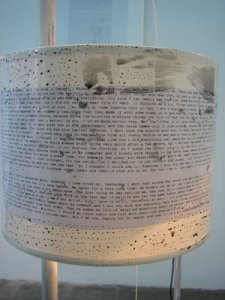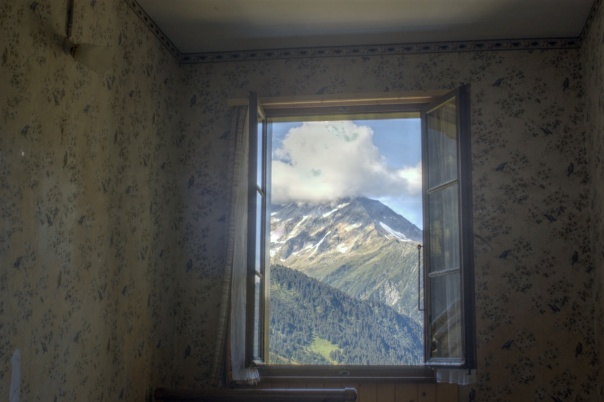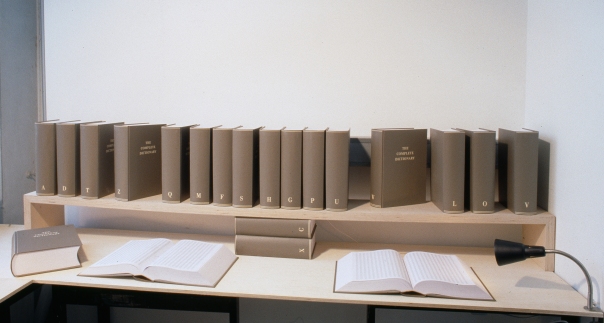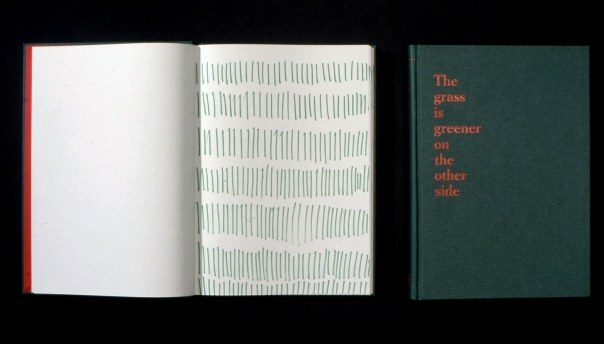This Saturday 13th November at 2pm I am giving a talk as part of Art/Writing: Writers, Writing and Exhibition-Making, an event at The Dock in Carrick on Shannon in Ireland. It is the first in a series of three Art/Writing Talks, curated by Fiona Fullam. On Saturday the other speakers will be Declan Long and Tine Melzer.
Fiona describes the Art/Writing Talks project as follows:
The Art/Writing Talks consider and explore the intersection of art and writing. What forms can art-writing take and how and where can this kind of work be disseminated?
Art-writing could be said to include critical writing, reviews, related theoretical or philosophical writing, art-writing – which links the visual and the textual, and also textual visual art. Where and what are the links between these and what kinds of knowledge can be produced at these points of intersection?
What could be lost or gained in moving beyond conventional discursive approaches into using visual and textual material? Are notions of authorship affected by the interdisciplinary nature of this kind of work?
For my talk I have been thinking through different and possible relations of writing and exhibition making, and have been conceiving of three distinct sections.
In the first I am thinking through a number of recent projects, all of which posit a different relation of writing and exhibition making. These include WRITING/ EXHIBITION/ PUBLICATION at The Pigeon Wing, DEPARTMENT OF MICRO-POETICS at the AC Institute, New York and THE SHADOW OF A TRAIN (curated by Mirja Koponon at Totalkunst in Edinburgh), which see writing refracted through various notions of curating and script-making.
In the second section I want to explore some historical and contemporary sources for exhibition making. This is a potentially enormous list so I am working on some performative structure that will enable, say, 100 examples in five minutes... Actually, I have changed my mind here and am focussing on the relations of writing, book and exhibition and how much vocabularies such as publishing, distribution and exhibition are transferrable. Book as exhibition? Exhibition as publication? Still unfolding…
Finally, I want to try and unfold some meanings and understandings of this model of the (art-) writer. I will post more notes and references from this talk on the site next week, but for the moment I wanted to highlight a couple of references that I have returned to repeatedly, and which this talk seems an opportunity to explore more fully:
(1)Joseph Grigeley’s notion of “Exhibition Prosthetics”. This explains how exhibitions have always been surrounded by writing (press releases, proposals and so on) but that this writing can understood differently within a new concept of the exhibition as a prosthetic body.
(2)Falke Pisano’s notion of a practice that moves both freely and transformatively between different sites of page, performance, exhibition, statement, title, content and on. As Pisano writes in her artists book Figures of Speech:
Between these different works there is a circulation and exchange of language, ideas, and forms. A transfer from one work to another often involving a change of status, a reflection within a different context or a further elaboration on an idea. Several formulations come back in different works; formulations of ideas for works become works; descriptions of works are used in preceding or following works and there is an exchange between descriptive or explanatory texts about the work and the work itself.
It is this notion of fluidity, what precisely it means, and how we might understand it, that is at the core of this talk and the practice (my own and others) that I am using it to try and dilineate. In several recent projects I have been interested that the fluidity seems to go along with a more radical transformation of form that also suggests a stop or blockage.
This was certainly true of the online Assemblings – Essaying Essays and Writing Exhibitions – that were made into an exhibition-in-a-box for The Reading Room in Berlin. It was also true of the summers collaborative talk on Kurt Schwitters (with Marit Muenzberg) that I re-made as a text for the forthcoming translation issue of dear sir magazine.
Another useful model for thinking through these issues is John Kelsey’s recently published Rich Texts: Selected Writing for Art (Sternberg Press, 2010). Debates about art writing have often involved shifting it from being “on” art practice to being both “on and as.” So what is that “for” doing?
Kelsey’s texts include journalism, catalogue essays, press releases, Top 10 listings, and introductions. In his preface Kelsey finds a metaphor for his writing practice in the Microsoft Corporation’s RTF document file format, which can transfer material between platforms whilst maintaining its human legibility. Kelsey goes on:
Many of the texts included here attempt to engage (and perform) the problem of their own participation within (and extension of) the networked, communicational space they share with art. They are produced on the same screen that’s used to visualise, organize, and mobilize contemporary art, and so no matter what they say, or however inaccurate their perceptions and judgements may be, they know they are close to art, in fact simultaneous with it. (7-8)
Kelsey goes on to observe how these texts were produced amidst a number of other professional tasks, including the founding of Reena Spaulings Fine Art in New York, and a collaborative writing practice as a member of Bernadette Corporation. How do these practices relate to writing? Kelsey concludes:
… these “rich texts” are also immediately involved with the question of how to elaborate (habitable) rhythms of production today. The reason for avoiding the professional identity of either a writer or an artist, a critic or a dealer, is to bring ourselves closer (and in a more fascinated way) to the problem of how art works under its present conditions. To get closer to a possible and paradoxical definition of art through assuming art’s increasing loss of distinction from other communicative activities. Doing several things at once has been a way of remaining unemployed even in the midst of constant, inescapable employment. Writing, too, can be a form of unemployment within employment, and so is closer than ever to art. (8)
That central to any practice of writing is the articulation of some model of relation of writing and art is picked up on by Daniel Birnbaum and Isabelle Graw in their editors introduction. Suggestively, they suggest the identity of the “hack” may be a useful pseudonym or mask, citing Kelsey’s own statement that “To play is not to calculate profits, it’s to explore multiple forms of distance from oneself. If the critic is always right, the hack is always there – always in play.”
Having cited all this at length I should say that, working on Saturday’s talk, I have been pondering my own relation to this set of ideas, wondering if its actually describing the context I find myself in, or something else, or how precisely this pattern of similarity and difference works.
I’ve also been wondering if there is some way of thinking this through that draws on the various reading-lamp sculptures of Josef Strau. I’ll report back next week.


NOTE: Two further events in the Art/ Writing Talks series are scheduled. On 27th November, at Spike Island in Bristol at 2pm, Daniel Jewesbury, Tamarin Norwood and Jesse Jones will discuss Text and Context. A final session on 11th December, sees Maria Fusco, Maeve Connolly and Kevin Atherton gathered around the theme of Place and Possibility at the Goethe Institute in Dublin. See the schedule here.



